Brilliance Unleashed: Aston Origin Review
A masterclass in original British design and innovation
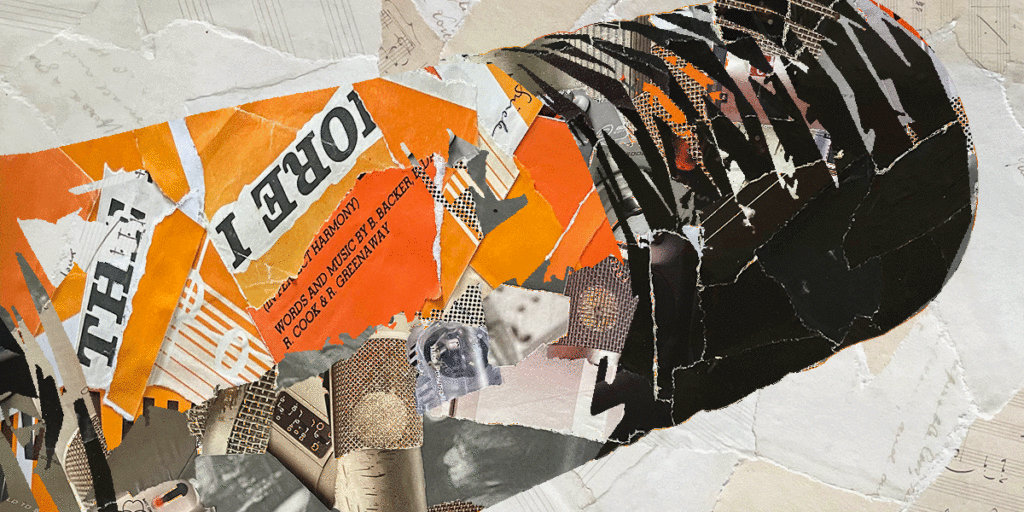
Reviewed by: Paul Narang
Review date: July 2023
Current price: Under $250
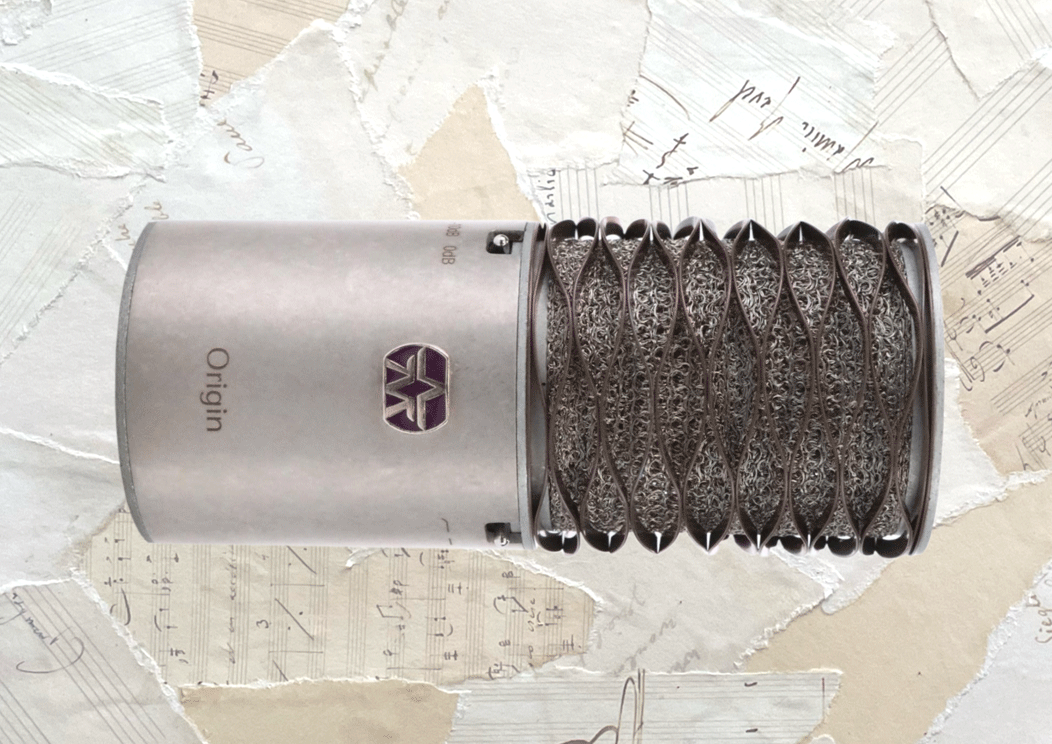

Aston Origin Review
| Pros: | Cons: |
| Clear detailed sound Affordable Durable Stylish and unique | Perhaps too bright for some Low cut filter is very strong |
Aston Origin Review
Aston Microphones is a British firm who are relatively new to the microphone market. But their first release, the Origin mic has already made a strong impression.
This quirky fixed cardioid condenser offers a combination of bright, detailed sound with an eye-catching steampunk design. Great on vocals and instruments, the Origin is a worthy addition to both the home and professional studio.
What is it?
Established in 2015, Aston Microphones haven’t been on the scene for very long. But in that short time their microphones have already won numerous awards and gained a great reputation.
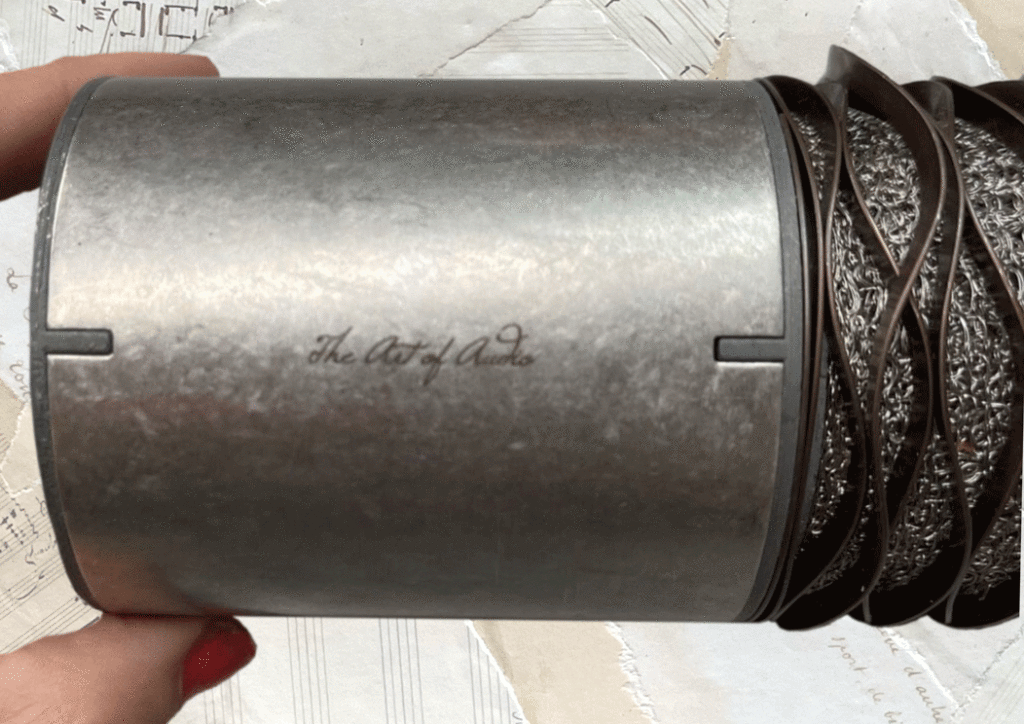
Aston describes themselves as one of the only mainstream microphone manufacturers still making many of their products in the UK. They’re known for involving experts from the British music industry in their extensive listening tests. And from these tests, choose the best sounding capsules and electronic components for their microphones.
The Aston Origin microphone is a cardioid condenser mic with an extremely affordable price tag. It’s suitable for home studios and should be on the list of anyone looking for a mic within a midrange price bracket. The Origin has a clear, even sound which offers some versatility in the studio – fairing well on a range of instruments as well as male and female vocals.
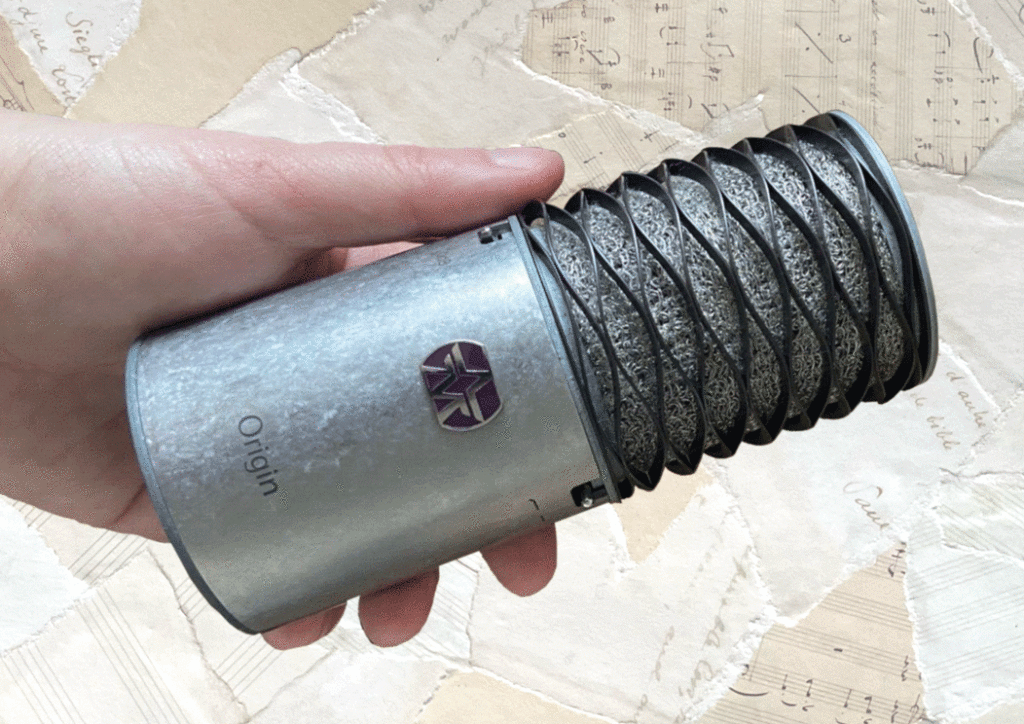
Despite the eye-catching styling, the basic design is pared-back and simple. When it comes to features, it has a -10dB pre-attenuation pad, and a high pass filter switch (also called a low cut). And the design incorporates a built-in mesh pop-filter to help reduce plosives.
Aston Microphones is clearly a manufacturer with big ideas and a passion for British sound and design. But is this just marketing hype, or does the Origin hit the mark? Let’s see how it performs in the Aston Origin review.
In the box
The Origin comes in a nice recycled box – they’re clearly considering the environment. It’s perfectly adequate for storing the mic away on a shelf in the studio. As well as the microphone, there’s a ⅝” to ⅜” stand adapter. That’s it I’m afraid!
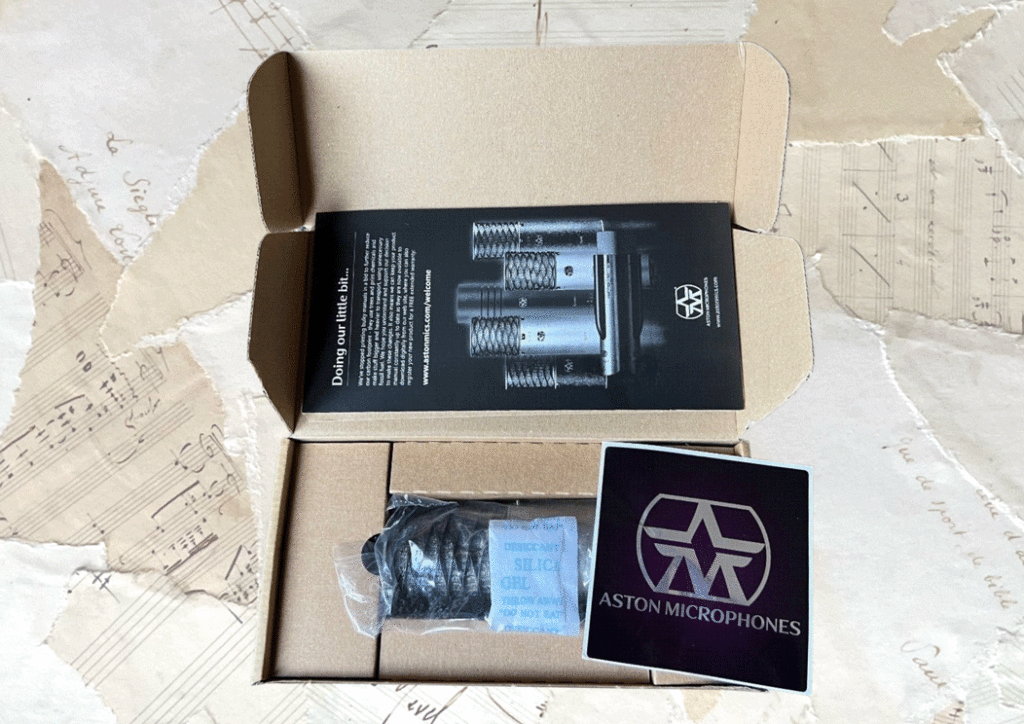
Aston Origin Polar pattern
The cardioid polar pattern of the Origin creates a heart-shaped sensitivity zone in front of the microphone. It functions as you’d expect from a microphone, capturing the majority of the sound from the front and significantly less from the rear and sides.
The cardioid pattern is ideal for home studios lacking comprehensive acoustic treatment as it enables you to capture just the sound of a vocalist or instrument, while minimising noise and reflections from the surrounding environment.

Take a look at the diagrams below to see how the cardioid pattern changes on the Origin, depending on the frequency of the sound being recorded. The lower frequencies, up to about 500Hz can be picked up from all sides of the mic to some extent. The rounder shape you can see here is called subcardioid:
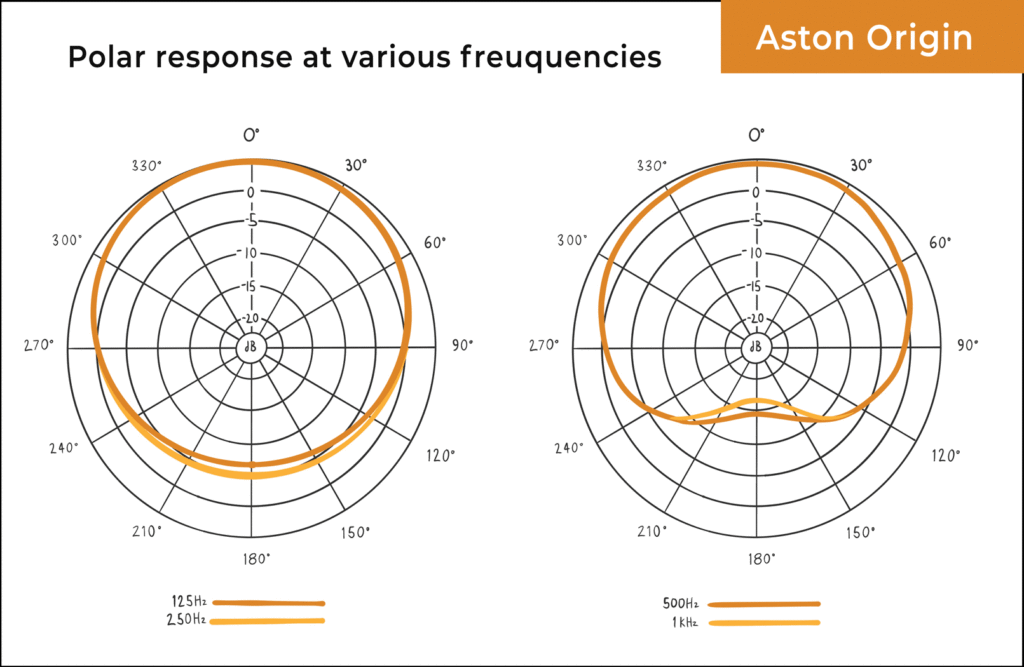
In the higher frequencies, the cardioid heart shape becomes more distinct. In the highest frequencies it begins to resemble a figure of 8 pick up pattern:
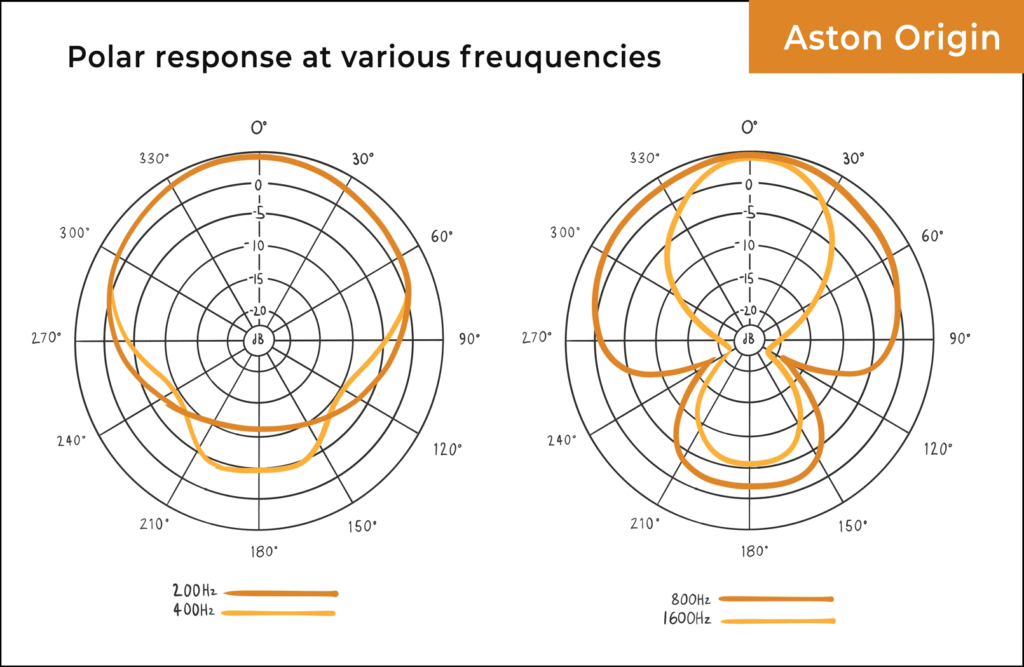
Phantom power for the Aston Origin?
Being a large diaphragm condenser microphone, the Origin does require phantom power. Phantom power is a mild voltage current supplied to the microphone from a mic preamp, mixing console, or audio interface. It’s transported via an XLR cable.
If your audio interface or mixer lacks phantom power, there is an alternate method: attach the Origin to an external 48 volt phantom supply and then connect the phantom supply’s output to the mixer or audio interface.
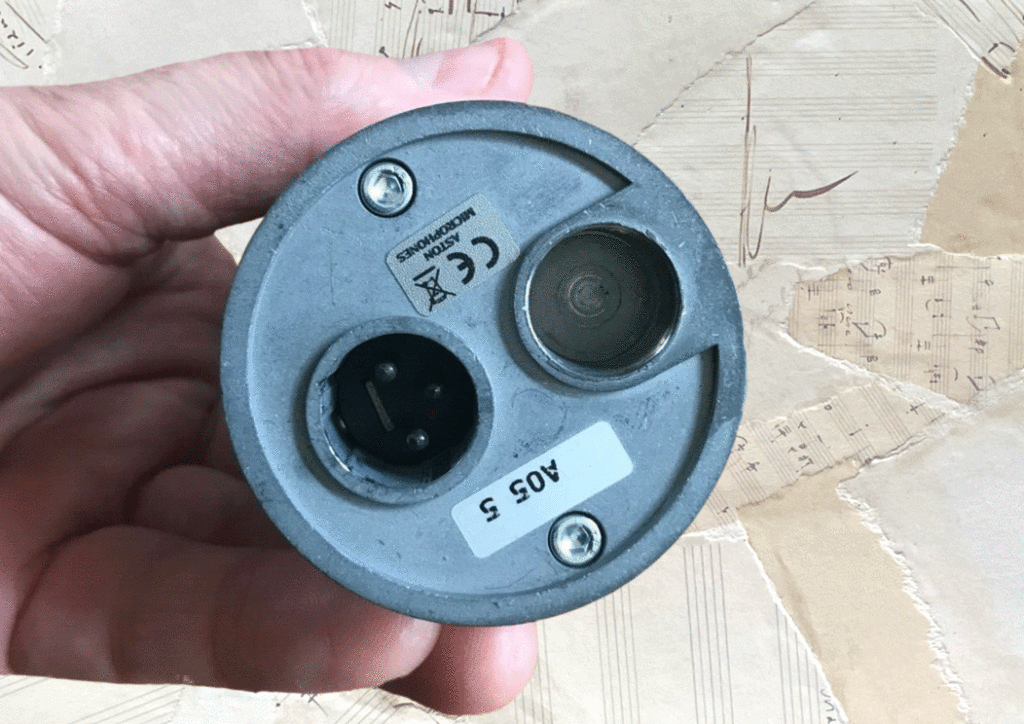
Connecting the Aston Origin
The Origin microphone needs an XLR cable for a direct connection to the audio interface or mixer. XLR connectors, the industry standard for professional studio gear, are ‘balanced,’ which means they provide protection against interference over longer cable runs. XLR cables are the only type of cable capable of delivering phantom power to a microphone.
The Origin Design and Build
The striking aspect of the Origin, which really makes it stand out from all the other studio mics, is the unique design. This mic looks lovely, making it a great mic to have on view for music videos or photo shoots.
The chassis is made from stainless steel with a tumbled finish, giving it that unique industrial-style finish. On the base section there’s an embossed logo, and laser-etched text reading ‘Origin’.
The upper half of the mic incorporates what Aston call the ‘waveform spring head’. It’s a decorative metal lattice surrounding the capsule, which not only looks cool, but has practical value. The mic is shock resistant, designed to distort if dropped or knocked. It can then simply be reshaped afterwards by rolling the mic on a flat surface.
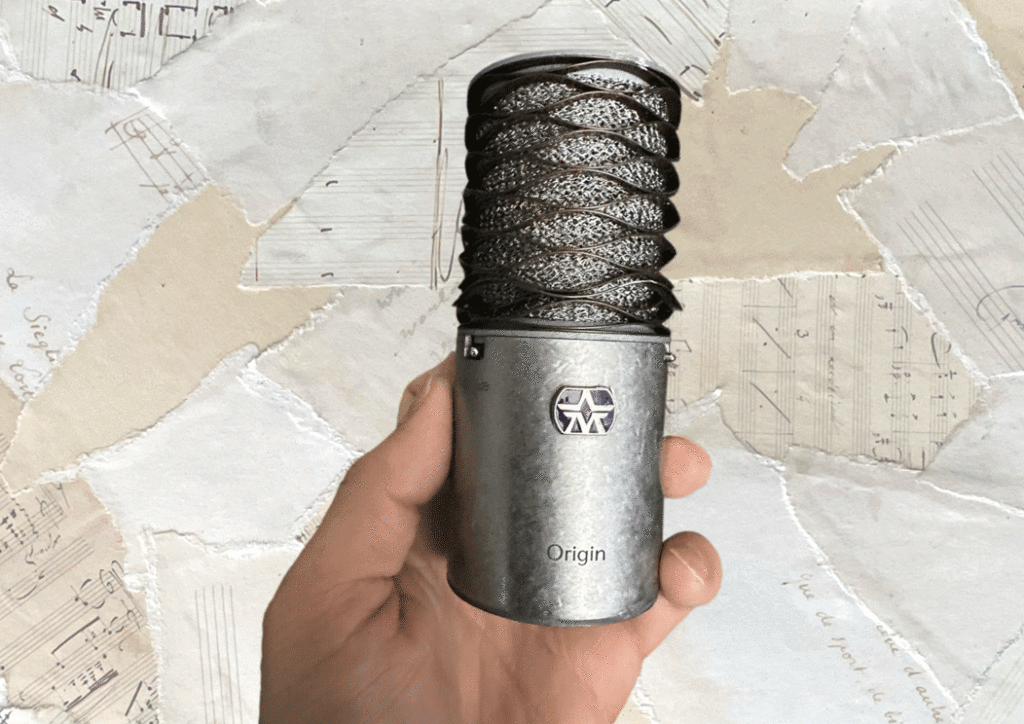
The waveform spring head design also has another unique advantage. It bypasses the need to have vertical support posts around the capsule. These can reflect or refract sound, with the potential to cause high frequency peaks and troughs in the EQ curve.
Behind the waveform structure there’s a stainless steel wire mesh weave. This acts as an integrated pop filter, to reduce plosives. The capsule inside the microphone is held in place by internal shock suspension. This will help to reduce any unwanted stand noise and vibrations. You can of course also buy an external shock mount and pop filter for even more noise reduction and plosive rejection.
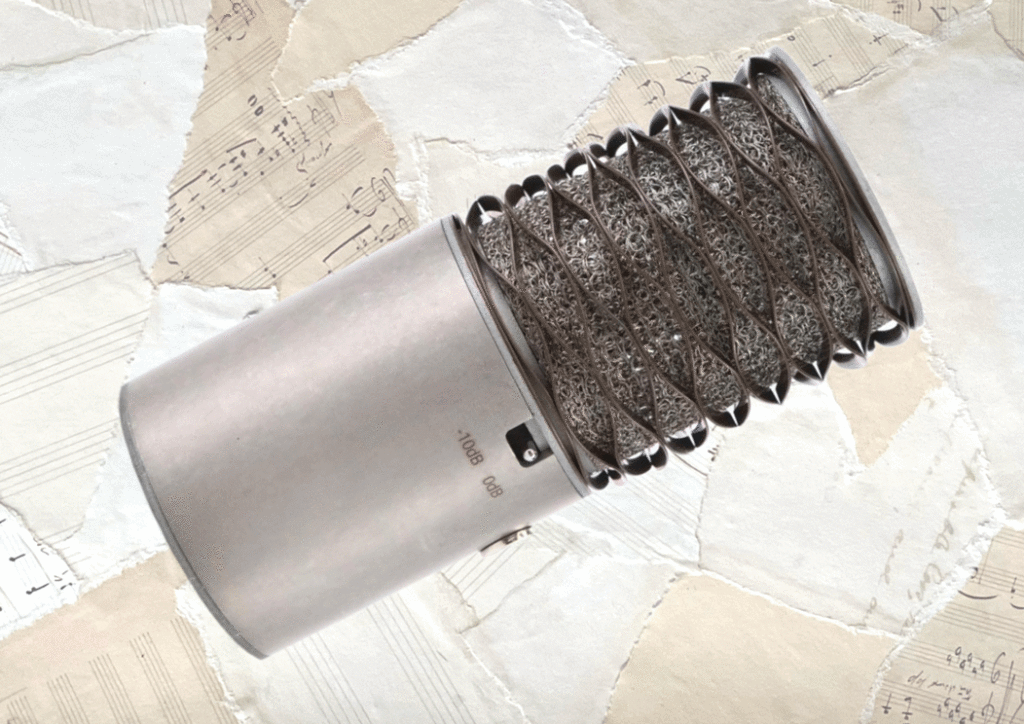
The Origin has two switches: a -10dB pre attenuation pad, which is useful for recording louder instruments such as horns and drums. It also has a high pass filter switch, rolling off the bass below about 80Hz. This is useful for helping to tame the proximity effect, or to counteract particularly bass heavy instruments and voices.
On the base of the mic, the XLR connection and microphone stand thread is built into the housing. It’s another unique design feature, and eliminates the need for a microphone clip. Overall, the microphone exterior feels sturdy and durable in the hand.
Aston Origin Dimensions and Weight
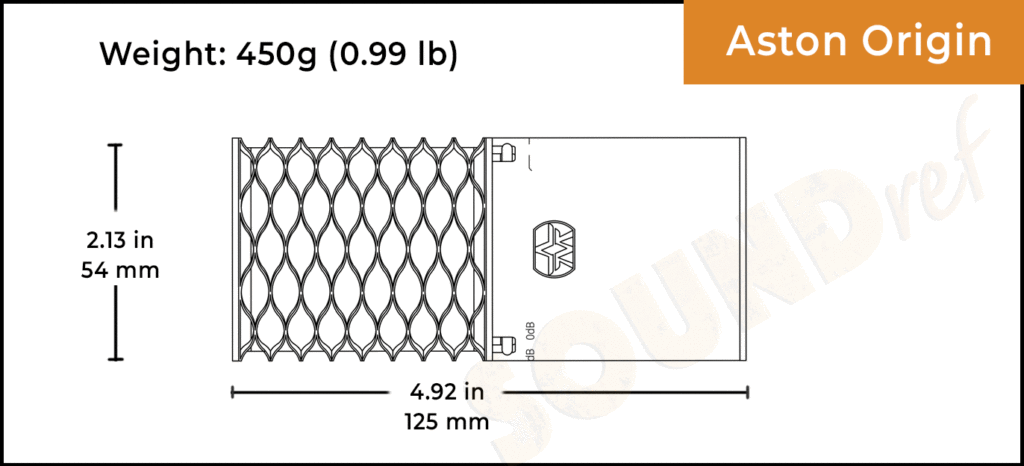
The Origin is a nice compact size, less tall than many other cardioid condenser mics. The hefty weight reflects the solid build quality, and reminds me of its durability. It’s heavier than others, but certainly not too heavy to carry around.
- Length 125 mm (4.92 inches)
- Width 54 mm (2.13 inches)
- Weight: 0.450 kg (0.99 lb)
Aston Origin frequency response
The Aston Origin microphone has a frequency range of 20Hz – 20kHz, which spans the entire range of human hearing. The frequency response is smooth and flat below 1kHz, resulting in a consistent and even tone in the mids and low-mids. The bass cuts below 100 Hz with a gradual low rolloff.
And from 2kHz upwards, there’s a slight boost of a few dB until around 10kHz. This is what gives the Origin a naturally bright sound, really enhancing the high frequency detail and clarity.
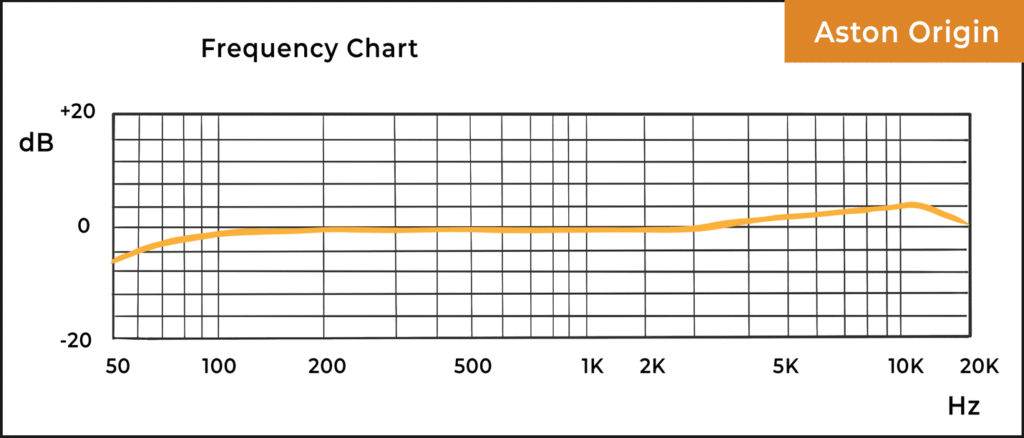
Aston Microphones don’t give much away about the curve of the 80Hz low cut filter. When I tried engaging it, I personally found it to be a little aggressive, and would prefer a more gentle curve. However, if you do find that the low cut filter doesn’t suit your voice, its simple to record without it, applying some targeted EQ during post production.
There’s a presence boost in the higher frequencies, which to my ears sounded smooth and natural sounding on vocals. It has a crisp sound, great for acoustic guitar, and anything with high end detail. The Origin is undoubtably a bright sounding mic, but certainly never harsh. With the right placement, it’s capable of a superbly balanced sound, with a fine balance of warmth, depth and clarity.
Aston Sensitivity and Self Noise
The Aston Origin has a sensitivity rating of 23.7mV/Pa. That’s a high rating, closer to the more sensitive end of the scale when compared to other studio condensers. The advantage of using a sensitive microphone like this is in its ability to pick up plenty of fine detail and nuance. You can use the Origin to capture the more subtle and intimate characteristics on vocal and instrumental recordings.
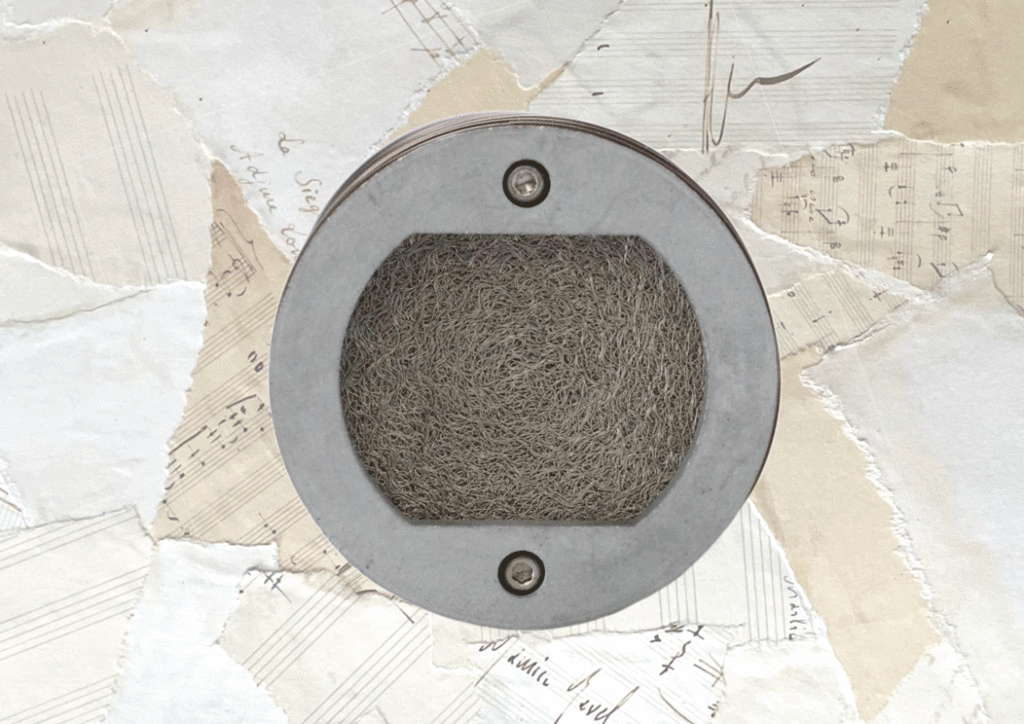
With a maximum SPL rating of 127dB, the Origin gives you plenty of headroom for recording loud instruments and vocals. But if you find you want to record something even louder, there’s the option to engage the -10dB pad.
The Origin has a self-noise rating of 18dB. Whilst this is louder than some other microphones on the market, I found that for close miking vocals and instruments in the studio, it didn’t cause any issues. If you’re looking for a mic to make more ambient recordings, perhaps an ensemble from a few feet away, or AMSR, you’re probably better off with a quieter mic.
The Aston Origin impedance level
Like many studio condensers, the Origin has a low impedance level of 200 ohms. This makes the microphone suitable for very long runs of cable without any signal degradation.
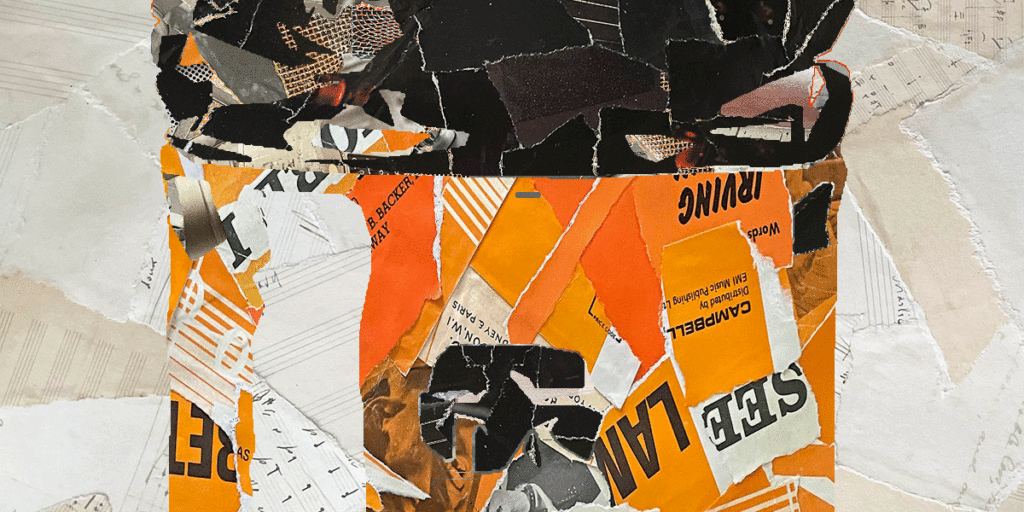
Aston Origin Sound quality
I’d describe the Origin as sounding clear and true – an authentic sound. It’s a very natural sounding mic, accurately picking up both vocals and instruments.
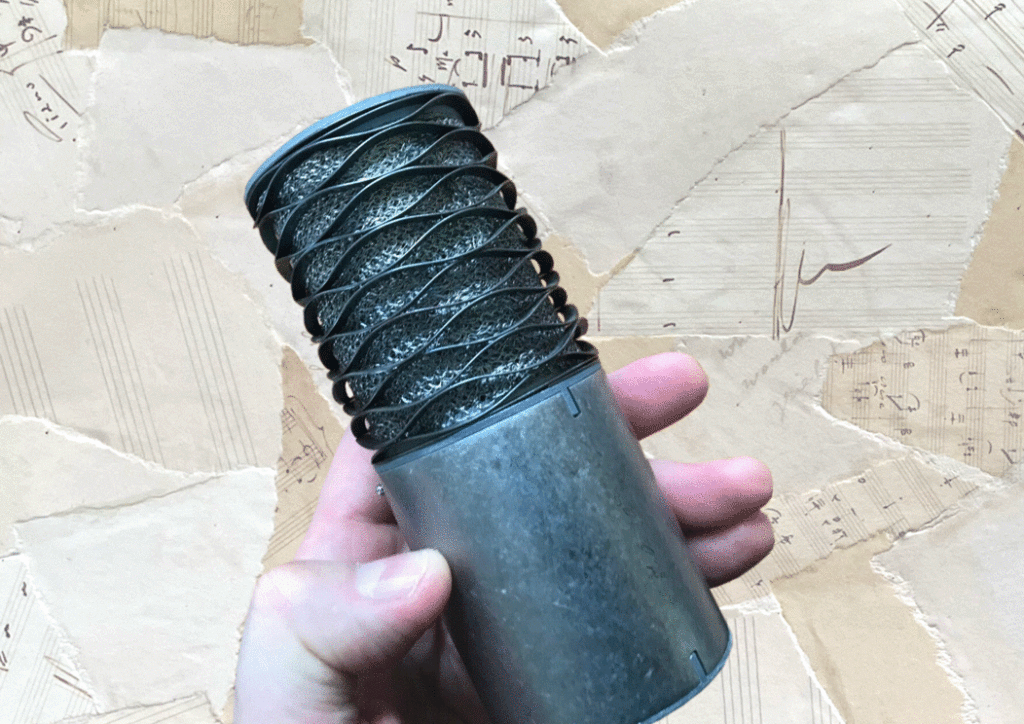
When recording vocals, the feature that stood out for me was the level of detail. But this is also a double edged sword – while it was great for singing, recording spoken word brought out too many of those annoying mouth sounds (clicks, swallowing etc).
But the overall sound for vocals was good – the Origin’s sound quality easily matches other condenser mics costing double the price. On male vocals I found the low-cut filter a bit steep, stripping out too much of the bass. But in neutral mode the Origin produced some gorgeous recordings – full and warm across the frequency range.
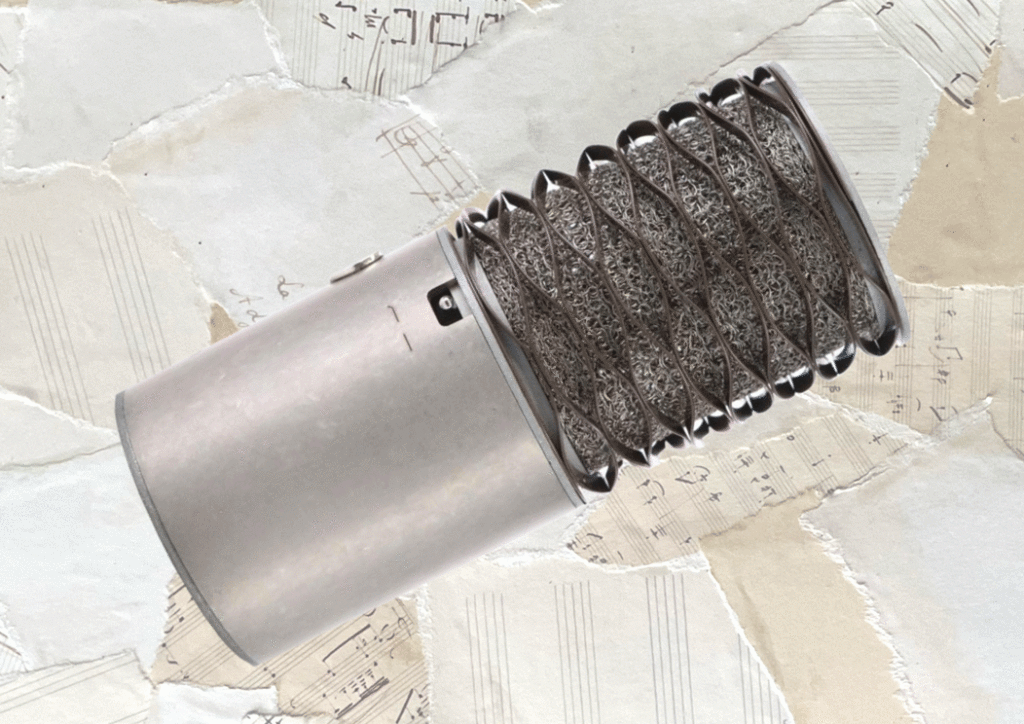
The Origin is a good all rounder – you could certainly use it for various drums, or recording a horn section. I found it to be particularly good on the acoustic guitar, really bringing out the attack and high-end detail. I wouldn’t hesitate to try it with electric guitar amp too, though didn’t get a chance to before writing this review. I did try it on my sax though with good results – bright without being harsh, and really accentuating the harmonic details. Hand percussion sounded sharp and crisp, and I think this mic would work well as an overhead mic for a drum kit.
I’d describe the Aston Origin as having a bright and airy tone. The presence boost at the top end may be a little bright for some sound sources, but in general the high frequencies add a sparkle and clarity, without ever feeling too harsh. Overall the Origin is a great sounding microphone that picks up a lot of clarity and detail.
Aston Origin microphone in the recording studio
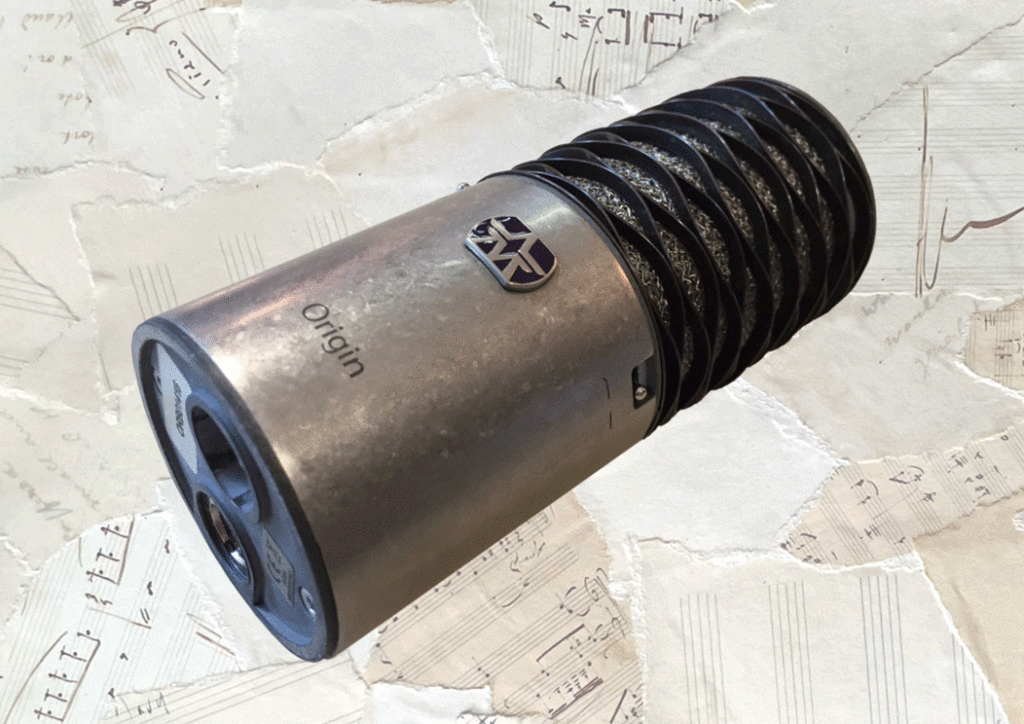
You can use the Origin right out of the box, attaching it directly to a microphone stand without an extra clip. The internal suspension mount does a respectable job of reducing stand noise and vibrations, and the wire mesh built-in pop filter keeps most plosives at bay.
I’m not sure you’d really need an external shock mount if you’re just starting out, though you will need an external pop filter. If you want the full package, you do have the option to pay a bit more for the ‘Black Bundle’, which includes a fitted shock mount and external pop filter.
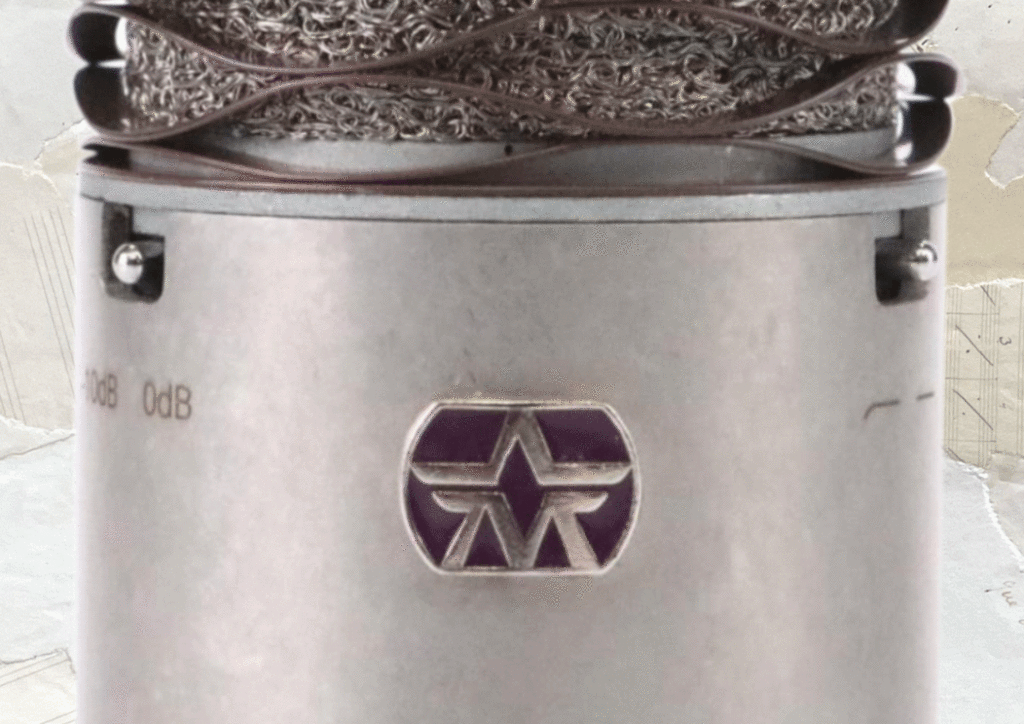
The low frequencies feel well controlled during recording, and the mic isn’t too sensitive to the proximity effect. With some condensers, positioning yourself too close to the mic means spoiled takes which are too boomy or unbalanced in the low-end. Not so with the Origin.
I found the cardioid polar pattern to have good off-axis noise rejection, especially in the higher frequencies. This really helps to reduce background noise and bleed from other noises and sounds, or if you’re recording multiple instruments in the studio.
Take a look at the frequency response charts above, and you’ll see that the pick up pattern in the lower frequency range, up to about 500 Hz, is picking up from all around the mic. I tried various positions around the mic with vocals and found the off-axis sound to be surprisingly usable. If I was recording a vocal session, I’d love to try a 60s-style configuration of multiple backing vocalists around the same mic.
British microphone innovations
England plays a prominent role in the development of the microphone as we know it today. This originates with the invention of the carbon microphone, by Englishman David Edward Hughes in the 1870s.
The condenser microphone, invented at Western Electric in 1916, was developed by British engineer, Captain Henry Joseph Round, and became the standard mic for the BBC studios in London. It was further developed by Londoners, Alan Blumlein and Herbet Holman in the 1931, into the HB1A – the standard microphone of the famous Abbey Road studios.
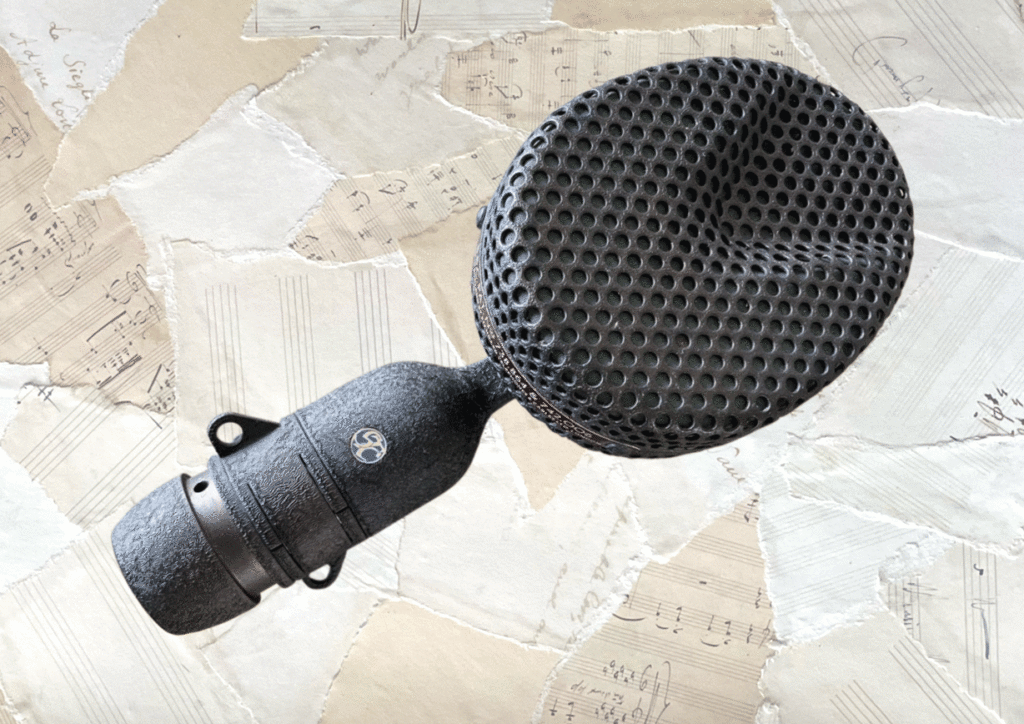
The next big British microphone was the Coles 4038, a ribbon microphone designed by the BBC in the 1950s. It’s a classic mic, renowned for its silky warmth – still widely used today around the world.
But it wasn’t until 2005 that we saw a new British mic from Sontronics – the STC-2 condenser. And 10 years later, Aston Microphones was formed, with an ambitious vision to reinvent the studio microphone with something built in the UK.
Other models in the Aston Microphones Range
The larger sibling of the Origin is the Aston Spirit, which retails at about twice the price. At 174.5mm the Spirit is 5cm taller, but other than that, features the same unique styling and sound.
The difference is that the Spirit has switchable polar patterns – omni, cardioid or figure-of-eight. Clearly, this means a lot of versatility in the studio, and easy and quick adaption to a variety of recording scenarios. You can use the omni-directional pattern for recording groups of performers or anything in a good acoustic space. The figure-of-eight is great for recording two singers at once, one either side of the mic.
The Aston Spirit also has a choice of two pre-attenuation pads -10dB and -20dB. Combined with a higher SPL of 138dB it makes the Spirit more useful than the Origin for the loudest instruments or raucous performances with unpredictable sound levels.
Dynamic vs condenser microphones
Dynamic microphones designed to be sturdy and enduring, making them less susceptible to damage from falls or knocks – a great fit for live performances. These microphones (such as the Shure SM58) are generally less sensitive than their condenser counterparts, so they excel at noise rejection and managing louder sounds. However, they fall short in capturing the high frequencies and mire delicate details.
Condenser microphones, like the Aston Origin, are less robust mics, but they provide greater sensitivity and detail. Their proficiency in handling higher frequencies results in a more spacious, sparkling, airy sound. The condensers’ ability to reproduce the most intricate details of instruments or vocals make them perfect for studio recording.
Aston Origin vs Rode NT1-A
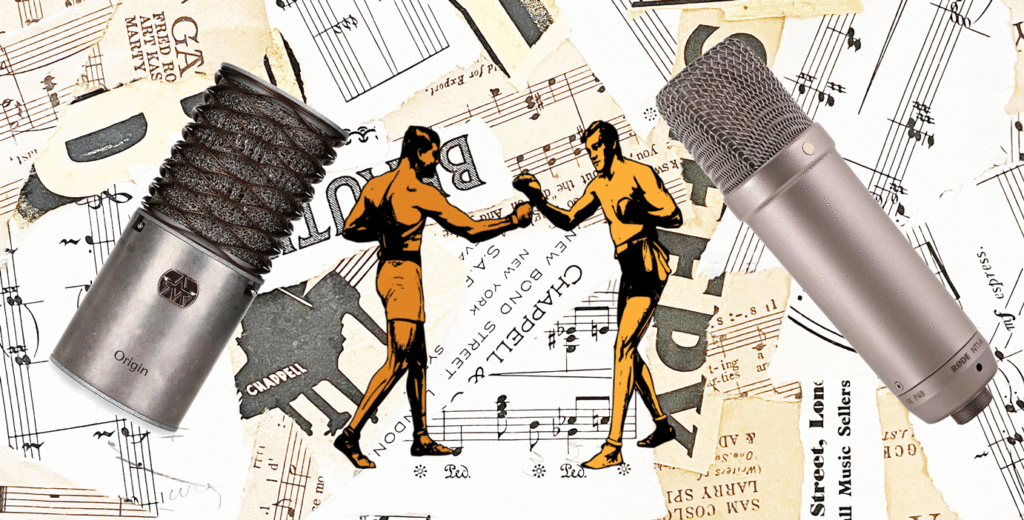
Another popular microphone for the home studio is the Rode NT1-A. Like the Origin, the NT1-A is also cardioid condenser at the midrange price. Rode has a reputation for producing high quality microphones at an affordable price, so how does it measure up to the Aston Origin?
They’re both good-looking microphones, but the Rode has a more traditional design. It’s also taller and a little lighter, measuring in at 190mm, 6.5cm taller than the Origin. The Rode lacks some of the features of the Origin – there are no pad or filter switches. But does that matter, considering you’ll probably leave the Origin’s low cut filter off?
In some areas, you could say the NT1-A beats the Origin. It has an incredibly low self-noise of just 5dBa, and also a higher SPL of 137dB. But the Rode lacks the integrated pop-shield mesh which is a top design feature of the Origin. But it does ship with an external shock mount, pop-shield and cable as standard.
In terms of sound, they both good quality, and have a similar frequency profile – a flat midrange and a gently boosted high-end. The presence boost on the Origin is much smoother on paper, with more peaks and troughs on the Rode. But how does this translate in practice? I did a side by side comparison on my own (male) voice, and found the Origin to have a brighter, more ‘exciting’ sound. The sound has an immediacy, more ‘in your face’ than the laid back NT1-A.
The Rode NT1-A retails at a slightly cheaper price than the Aston Origin, especially when you consider the bundled pop filter shock-mount and XLR cable. But British style and innovation comes at a price. For some it will be well worth investing in a solid mic which may well become a classic of the future.
Read the full Rode NT1-A review here
Aston Origin vs Shure SM7B
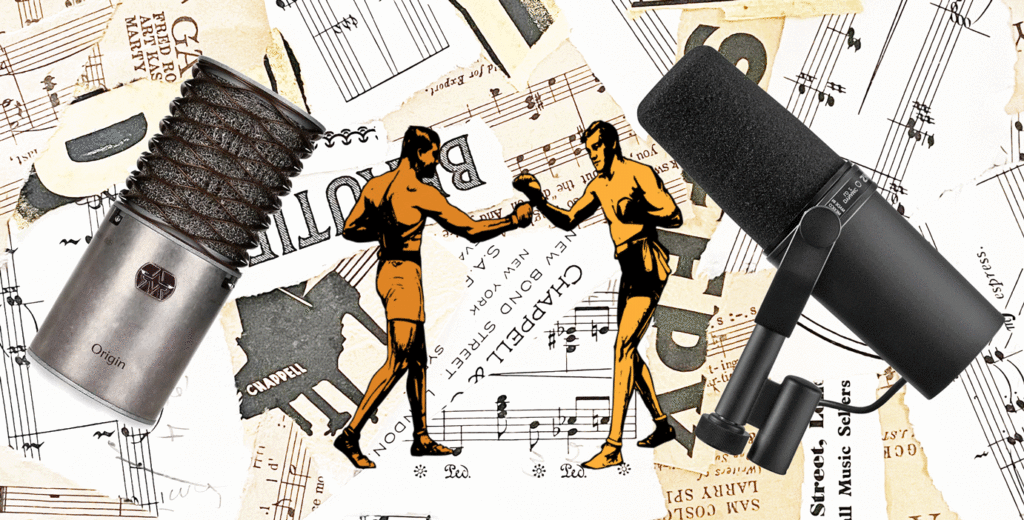
The Shure SM7B is an instantly recognisable mic, found in music studios around the world, and frequently used by podcasters and radio presenters. It’s more expensive than the Aston Origin microphone, but not out of the question for anyone shopping with a midrange budget. The SM7B is also has a cardioid polar pattern, but unlike the Aston Origin, it’s a dynamic microphone, rather than a condenser.
Despite dynamic mics traditionally favouring durability over detail and clarity, the SM7B is somewhat of a special case. It’s a dynamic mic built for the studio. It’s less sensitive than a condenser microphone, picking up less of the room sound and background noise, which can be a great advantage in small or untreated rooms.
Typically for a dynamic microphone, the Shure SM7B has a very high maximum SPL of 180dB. This is much higher than the Origin, making it a great choice for drums, horns and rock performances. However, the SM7B outputs a very low line level, so you’d probably have to look at buying a preamp to increase the gain to a more usable level. By contrast, as a large diaphragm condenser microphone, the Origin outputs a very strong line level which needs no further boosting.
Sound-wise, the Shure SM7B and the Aston Origin are worlds apart. The SM7B has a warm, rich sound, whereas the Aston Origin is much clearer and brighter. I’d recommend the SM7B for podcasting and radio, due to the warmth and room noise rejection. The Origin works better for sung vocals and instruments, and can be a bit too bright for spoken word.
The Origin will bring out the shimmer of an acoustic guitar, the high end detail of vocals, and the harmonics of a saxophone. Though if you have very loud brass instruments to record, or you need to close mike loud drums, the lower sensitivity of the SM7B would be better.
Aston Origin and the proximity effect
The position of the microphone in relation to your voice or instrument can greatly influence the quality of the recorded sound. If you’re in a studio with multiple sound sources and you need to isolate just one, you’ll need to get as close to the mic as you can.
But with condenser mics, the closer you are to the mic, the more the bass will be accentuated. This can be used to your advantage if you’re looking for that classic ‘radio presenter’ sound, or you need to beef up your vocals. But with an already bassy sound source, you have the option to engage the Origin’s bass roll-off switch, which filters out the lowest frequencies.
For a more harmonious and natural sound, try placing the microphone about 5 to 10 cm away from the sound source. This will mitigate the proximity effect and enable you to capture a fuller, more natural sound, including any other instruments and the room’s acoustics.
What else do you need?
The microphone is also available in a bundle with an external pop shield and shock mount.
Unfortunately the Aston Origin microphone doesn’t ship with any accessories. It could be argued that you don’t actually need anything else (apart from the XLR cable), as there’s an inbuilt mic stand adaptor, internal pop shield, and shock mount. If you want an external shock mount and pop shield, you can either buy the package, called the ‘Black Bundle‘, or get them separately.
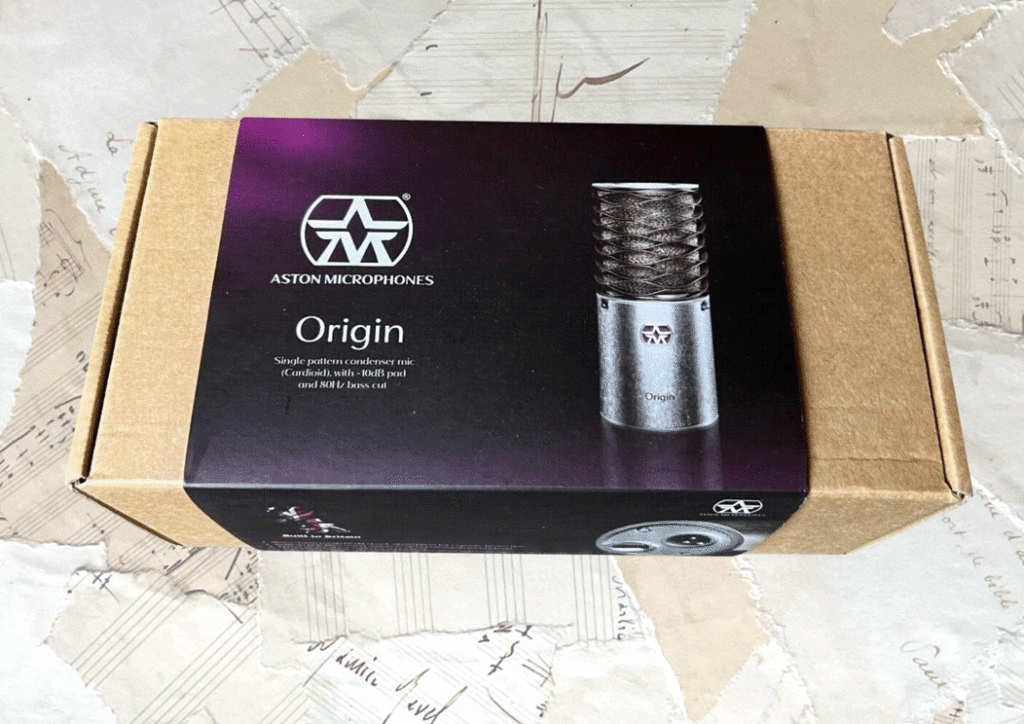
Some accessories for the Aston Origin mic:
- Microphone stand
Large diaphragm condenser mics like the Aston Origin will operate at their best when mounted on a stand. This will reduce any handling noise in the studio. Try a good quality boom stand, with a tripod base like the K&M 210/2
- XLR cable
If you invest in a classic large diaphragm condenser microphone such as the Origin, it’s definitely worth getting a good quality cable. If you want the best quality XLR cables, try these. Go for the shorter lengths where possible.
- Pop filter
You don’t need to spend much on a pop filter. Try one like this, or have a go at making one yourself out of an old pair of tights!
- Shock mount
Although you have the option to buy the ‘Black Bundle’, with pop filter and shock mount (which I haven’t tested), I do advise getting a quality shock mount which you can use for all of your mics, like the Rycote Universal.
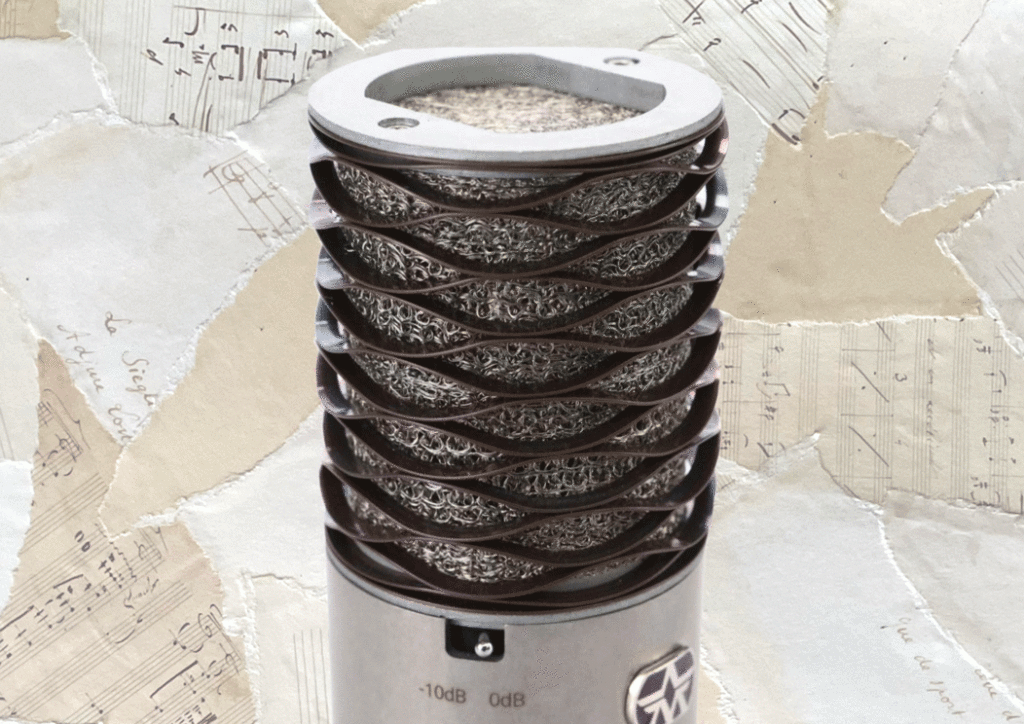
Conclusion
The Aston Origin microphone is a beautifully engineered, great-sounding large diaphragm studio condenser. It’s on the brighter side, with a lot of detail and clarity, capable of producing smooth and airy recordings with warmth and depth.
Though it’s popular as a vocal mic, the Origin is equally suitable in the studio for capturing a wide range of instruments, including acoustic guitar and horns. I have to admit to being a fan of the Aston Origin, there’s something about the quirky style, sound and solid build that I find irresistible!
Aston Origin Frequently Asked Questions
Does the Aston Origin need phantom power?
The Aston Origin is a condenser microphone, so it does require phantom power. You can receive power from the mixing desk, audio interface or a stand-alone unit
Where is the Aston Origin made?
The Aston Origin is designed, assembled and tested in Hitchin, England. It’s made by Aston Microphones, a British company based north of London in the UK.
Which artists use the Aston Origin?
Artists seen using the Aston Origin include Wes Borland , Steve Levine and Amy Keys.
Read about our pick of the best mics for recording vocals
